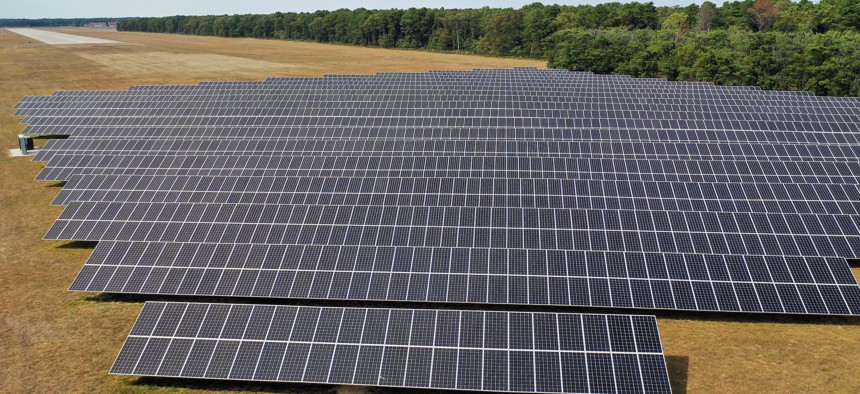New York State
Poll: New Yorkers want public power
As lawmakers prepare to head back to Albany, left-leaning pollster Data for Progress found support for legislation that came close but failed last session – with some caveats.

The Build Public Renewables Act aims to give the state more power to shift to renewables. Bruce Bennett/Getty Images
Members of the state Legislature came close last session to passing the Build Public Renewables Act, which would lift limits on the New York Power Authority to build up its green energy infrastructure – including the number of large energy plants it can operate, currently limited to six. NYPA would also be responsible for monitoring the state’s progress toward its energy goals – and picking up slack if it’s falling behind. A new survey from Data for Progress, shared exclusively with City & State, has found that a majority of New Yorkers of both parties surveyed would like to see the bill approved.
The leftwing polling group surveyed 1,210 likely voters at the end of November on a variety of questions relating to state action on climate change, including thoughts on the Build Public Renewables Act. After explaining in simple terms what the legislation would do, a total of 63% of respondents said they support the measure, with 27% saying they “strongly support” it.
In its explanation, the question said the bill would require the New York Power Authority to “conduct an annual review” to make sure the state is meeting a mandate of reaching 70% renewable energy production by 2030. “If the mandate is not on course to be met, NYPA would then build whatever renewable generation was needed” to meet that goal, the question continues. The poll finished its explanation by adding that the Build Public Renewables Act would make all municipal “energy infrastructure” 100% renewable by 2035.
According to a memo accompanying the legislation, the purpose of the bill is to “enable the New York Power Authority (NYPA) to own and build new renewable generation, storage, and transmission, require NYPA to provide only renewable energy by 2030 and to provide renewable energy to all state owned and municipal properties by 2035.” It doesn’t make note of the annual review included in the bill text, which the poll heavily highlighted. While not inaccurate, the poll’s explanation arguably did not paint a complete picture of what the legislation aims to do.
For many of those polled, this was likely the first time being introduced to the concept of the Build Public Renewables Act. Seventy-one percent of respondents said that they had heard “nothing at all” about the bill prior to the poll. Based on the explanation provided earlier in the poll, 63% of respondents also said that the CEO of NYPA should support the legislation. Justin Driscoll, the man in question, has testified before an Assembly committee over the summer that he opposes the bill, stating that the New York Power Authority has neither the funds nor manpower to do what the Build Public Renewables Act would require.
The poll painted a rosy picture for climate activists, but it also did not offer much for respondents to consider in terms of opposition. One question asked what aspect they liked best about the Build Public Renewables Act, with answers ranging from creating “public sector union jobs in
the renewable energy industry” to “ensuring New Yorkers benefit from federal funds for renewable energy.” Another question presented opposition as setting “an impossible standard for New York State and would put private companies at a disadvantage, hurting competition and resulting in worse options for consumers,” but asked respondents to choose the statement that best shows reasons to support the bill rather than whether they agree with it. The poll did not provide an option to agree with the opposition argument. At the end of the Build Public Renewables Act section of the poll, it asked again about support for the bill “knowing what you know now.” Support rose slightly to 68%.

